Publications
Delve Into Our Insights: Explore how TradeMark Africa is shaping economic growth, empowering communities, and advancing regional integration through transformative trade initiatives. Stay informed with our comprehensive publications.
Assessment of Existing Export Trade Barriers Facing Kenyan Fresh Vegetables
July 9, 2025
Unlocking East African Community (EAC)’s export potential under the AfCFTA
January 18, 2024
Other Reports
TradeMark Africa’s Top Agricultural Commodities and Destinations Report – May 2024
April 2, 2025
Call for Job Creation and Resilience in Export Oriented Value Chains Annual Program Statement (APS)
January 18, 2024
Online Validation Workshop Tool for Estimation of Greenhouse Gas Inventory for The Northern and The Central Corridor
September 6, 2023
One-stop border posts (OSBPs): an assessment of the economic and social impact
August 11, 2023
One-stop border posts in East Africa: impact on transport costs and issues for further analysis
August 11, 2023
Endline Evaluation TradeMark East Africa’s Cargo Tracking For Rail Project
May 3, 2023
Endline Evaluation for TMEA-funded Uganda Electronic Single Window (UeSW) Project
May 3, 2023
Evaluation of TMEA Supported Projects in the Areas of Infrastructure (Port of Dar es Salaam and OSBPs – Tunduma, Mutukula, Kabanga and Holili)
May 3, 2023
End Line Evaluation of the Kenya Horticulture Market Access Programme (KHMAP)
May 3, 2023
End of Project Evaluation of the Technical Assistance to Support the National Trade Facilitation Committee (NTFC) Secretariat in the Ministry of Trade and Industry (MINICOM)
May 3, 2023
Rapid Assessment of Single Customs Territory (SCT) in the East African Community (EAC)
May 3, 2023
Other Reports
Donor engagement with Agenda 2030 – How government agencies encompass the Sustainable Development Goals
August 5, 2021
Escaping from the Commodity Dependence Trap through Technology and Innovation
July 28, 2021
Fundamental lessons from regional economic communities for the African Continental Free Trade Area: A Case study of EAC
July 7, 2021
A review of the trade finance landscape in East Africa and the Horn of Africa: Barriers, opportunities and potential interventions to drive uptake
May 5, 2021
Summary The COVID-19 Crisis and East African Trade: Implications for Women Cross-Border Traders
April 6, 2021
Report on the tool for the estimation of Greenhouse Gas Inventory for Northern and Central Corridors
March 15, 2021
Prioritising SPS Investments for Market Access to EA Regional Trade – summary report
February 22, 2021
Prioritizing SPS Investments for Market Access for EA Regional Trade – long version
February 22, 2021
Waving or drowning? The impact of COVID-19 pandemic on East African trade
February 17, 2021
Impacts of COVID-19 on Eastern Africa Trade, Transit and Borders July 20th-3rd August 2020
August 18, 2020
Impacts of COVID-19 on Eastern Africa Trade, Transit and Borders July 13th-17th 2020
July 22, 2020
Impacts of COVID-19 on Eastern Africa Trade, Transit and Borders July 6th-10th 2020
July 20, 2020
Impacts of COVID-19 on Eastern Africa Trade, Transit and Borders June 29th-3rd July 2020
July 13, 2020
Impacts of COVID-19 on Eastern Africa Trade, Transit and Borders June 1st-5th 2020
June 12, 2020

